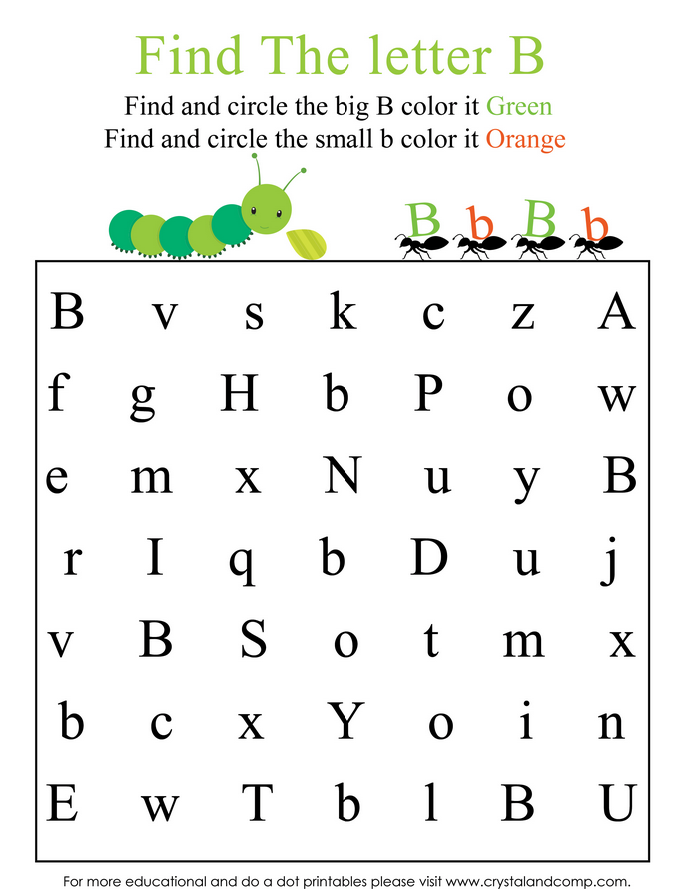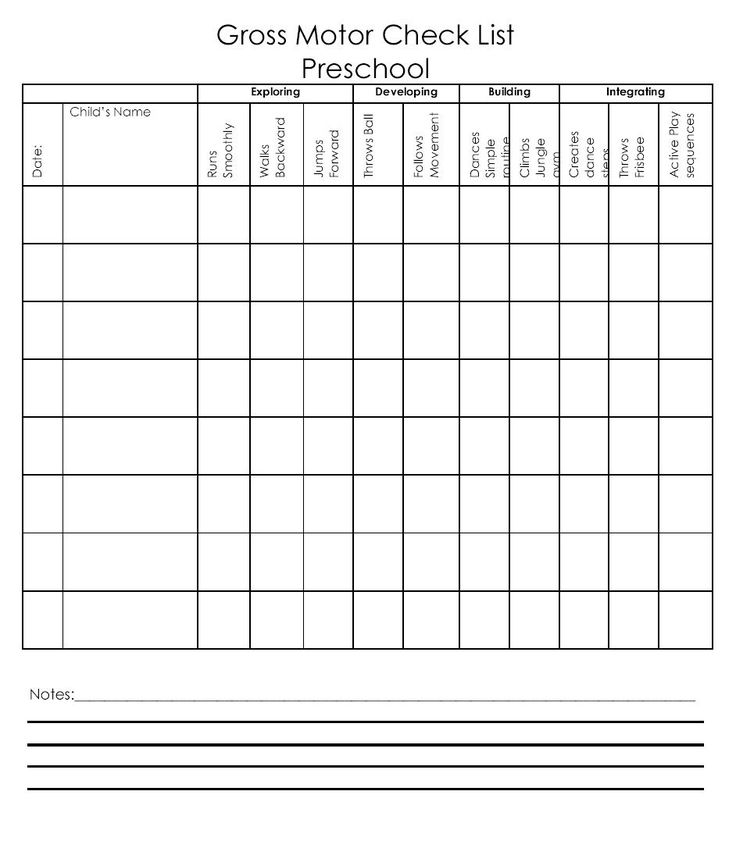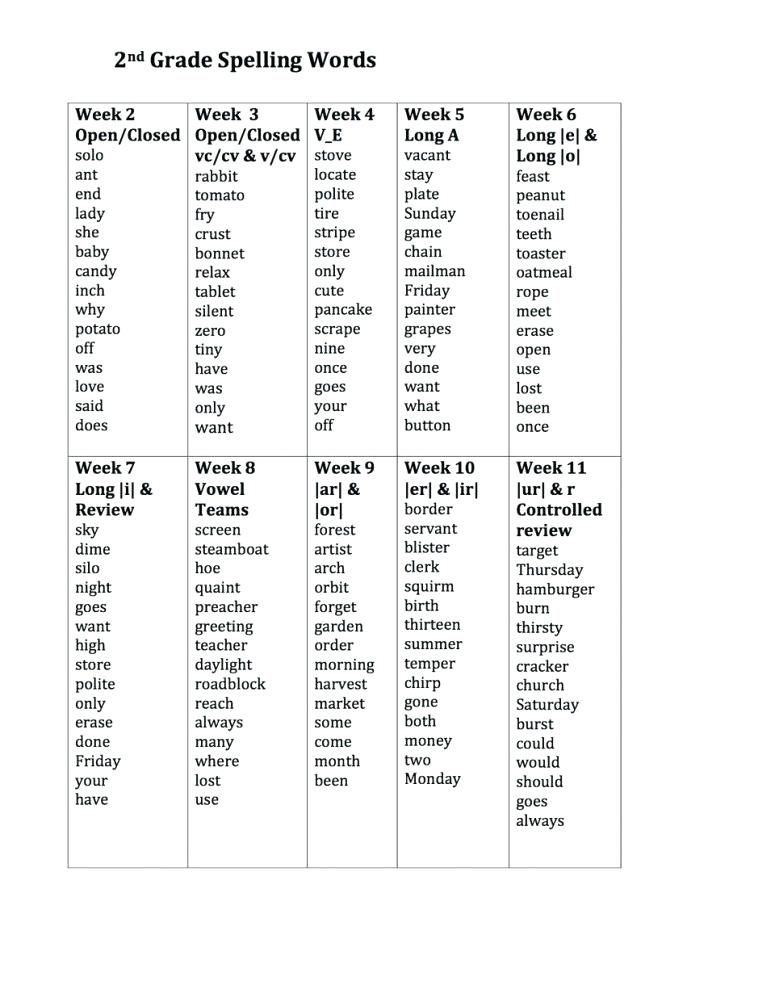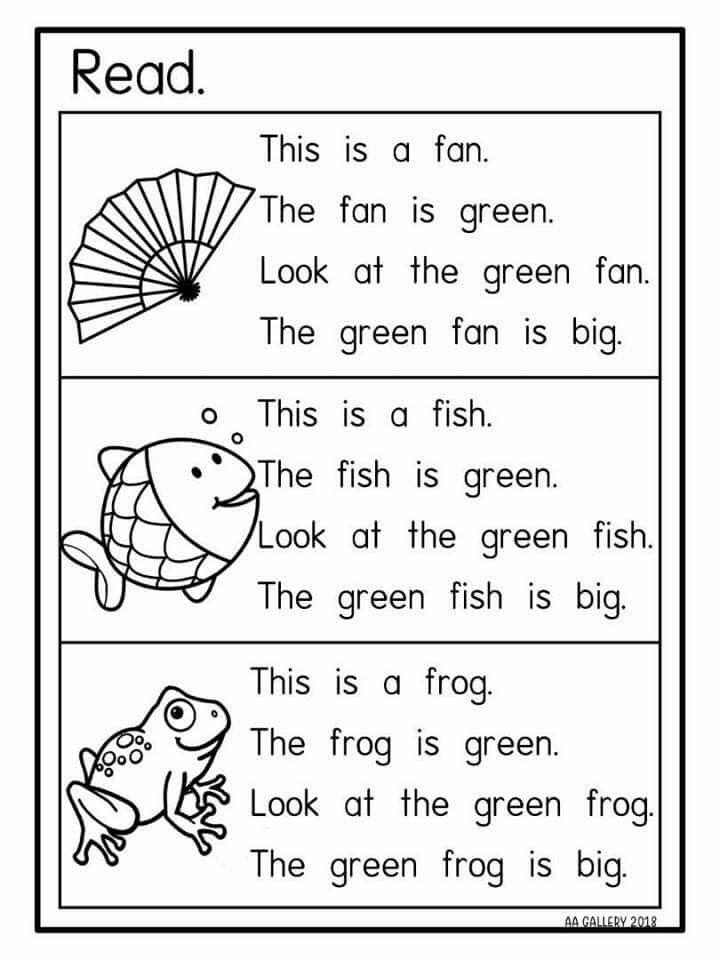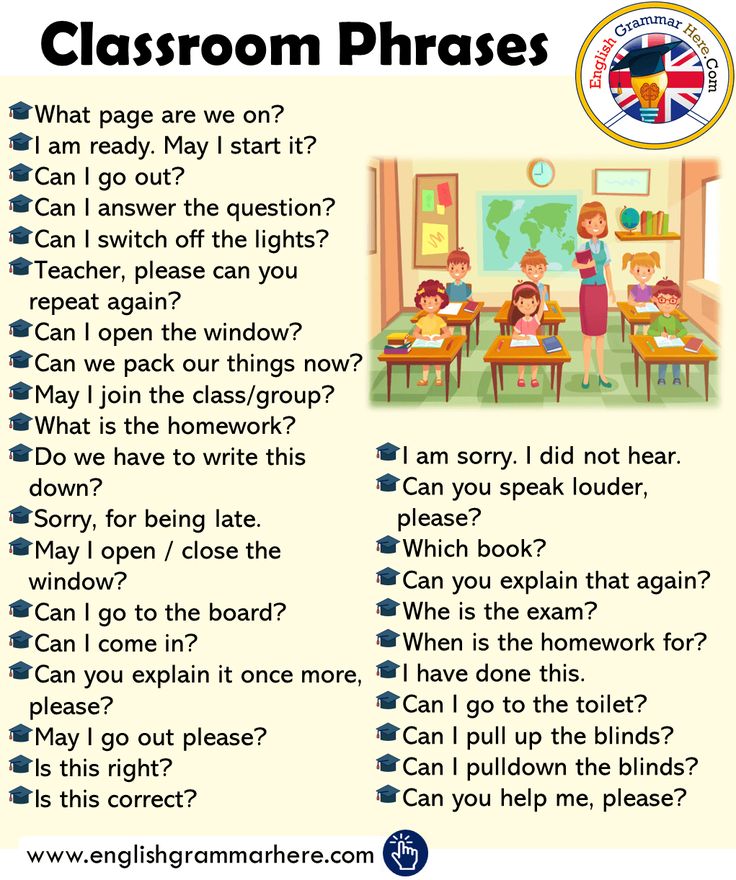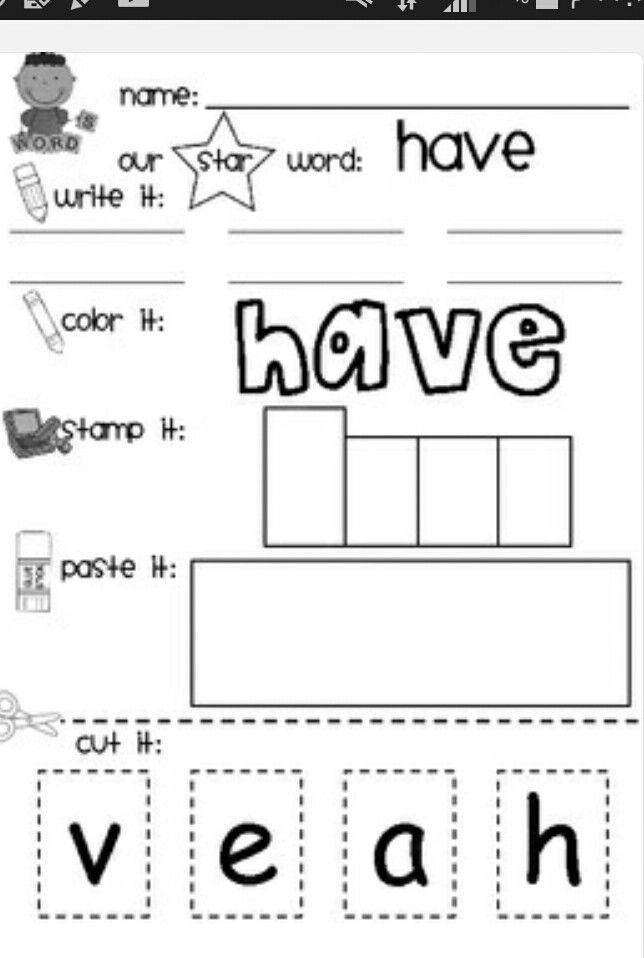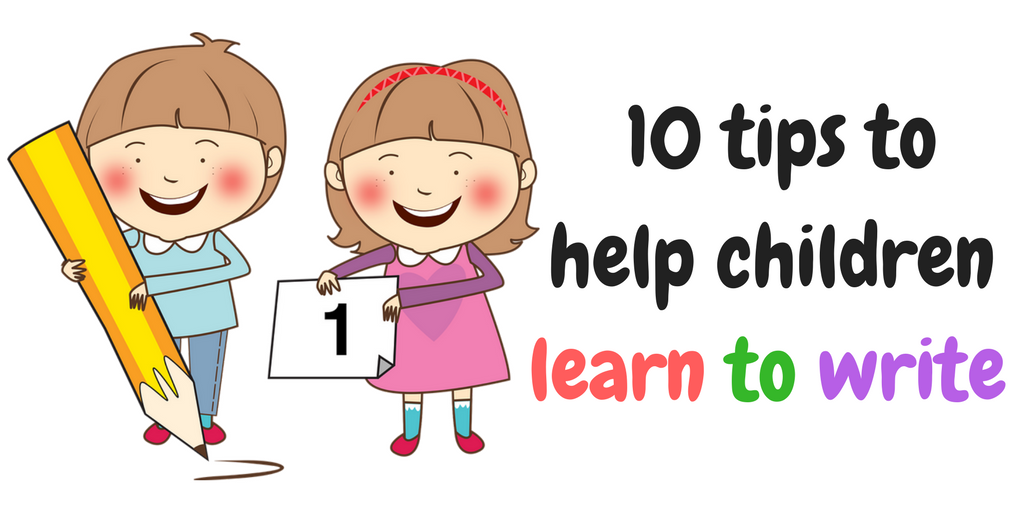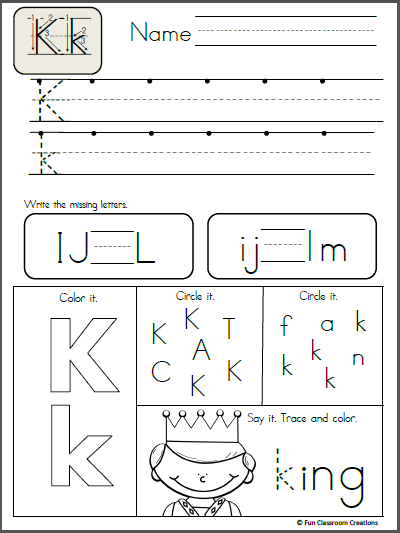Number matching games printable
Printable Counting Matching Game with Numbers 0-20
Use this free, printable Counting Matching Game as a tool for reinforcing counting and number recognition with preschool and kindergarten age children.
Incorporating card games into learning is a great way to help young children master number skills learning. Playing games is an engaging, low stress way for children to learn, especially when they are struggling to master a number learning skill, and memory matching games are a great first game to play with younger children, as they have simple instructions and rules for play.
Plus, playing a game offers a wonderful social element to learning. Children learn through the interaction with peers and interested adults who play with them.
Easy to download, print and play, this counting memory matching game includes cards representing the numerals 0 through to 20.
As well as the printable game cards, the download file includes an (optional) coloured backing paper. Print onto thick cardstock if you would prefer not to print the backing paper. The download and printing link and instructions can be found at the bottom of this post.
1. Shuffle the prepared cards well and spread them face down across the table.
2. Players take turns to turn over two cards, searching for the matching pair of numeral cards.
3. If the cards selected are a pair, the player keeps the card pair and takes another turn. If they are not the same, the cards are turned back over to rest in the same location on the tabletop, and play moves to the next player.
4. Once all cards have been matched into pairs, the player with the most pairs wins the game.
Game modifications:
Increase or decrease the difficulty of your counting matching game by only including card pairs for specific sets of numbers, say 0-10 or 11-20 – the less cards included, the easier the game will be.
Play with just even or odd numbers to focus the game on identification for specific number sets.
Further suggestions for using this resource:
- Print and laminate the matching card set for use at activity stations during small group rotations in class.
- Send home laminated card sets home with children for review. This is a particularly useful strategy for students who may be struggling to master the necessary counting skills.
Click here to download: Snow Globe Counting Memory Game. Save the PDF to your computer. Open the PDF to print the pages you require. Please carefully read any printing instructions included within the document.
Having trouble accessing or downloading the file? Please try a different internet browser.
Please note: All Childhood 101 printables are for personal use only, you may not use any part of this content for commercial purposes-that includes selling the document, giving it away to promote your business or website, or printing the file to sell. You may not share, loan or redistribute these documents. Teachers may use multiple copies for students in their own classroom.
For more cool matching game sets, check these out now!
Christie Burnett is a teacher, presenter, writer and the mother of two. She created Childhood 101 as a place for teachers and parents to access engaging, high quality learning ideas.
Number Matching Game for Kids: Let's Count Cookies! (Free Printable)
Jump to How-ToLearn to recognize numbers with this fun and easy DIY cookie counting game. Great activity for toddlers and preschoolers to practice counting and number matching while having tons of fun. Simply print, glue and cut!
A little while back I saw a cookie counting felt activity set on Etsy and thought it was the cutest thing ever! Unfortunately, I thought the time and detail it took to sew chocolate chips and number was too much.
On top of that, I wasn’t sure how much my train crazy toddler would be into cookies and ovens.
However, the idea of counting cookies and sticking them into a see-through oven was just too cute to pass up! Now that my toddler is finally starting to understand numbers, I decided to recreate my own version by making an easy printable.
This number matching cookie game is fun and easy to make! It comes with 12 chocolate chip cookies, a baking tray and a see through oven for kids to store the cookies. My toddler had a blast matching the cookies with the correct number on the tray as well as sliding the cookies into the oven. I’m sure your little one will enjoy it as well!
What Materials should I use to Make this Number Matching Game?
Material # 1: Cardboard (most cost friendly)For this tutorial, I glued the printable on up-cycled cardboard boxes, applied mod podge, and cut them out. I liked the slight 3-Dimensional texture of the cardboard
Another added bonus is that it’s cheap and easy to find (you probably already have some around your house)
The only bad thing about using cardboard is that it’s difficult to cut with scissors (especially around curves). I recommend using a razor blade or utility knife, but it does require some patience to cut out all the pieces.
Material #2: Thick FoamThick foam (6mm) is another good option as foam is easily cut with scissors. Additionally, the 6mm foam a little 3-Dimensional depth to the game pieces and foam is also soft and squishy to hold.
If using foam, simply follow the same steps as cardboard but with foam instead. You can also apply mod podge over the pieces for a nice gloss!
Material #3: Print on regular Paper and Laminate (easiest)This is probably the easiest option as you save yourself the step of having to glue the printable on the material of choice. Simply print, laminate, and cut out all the pieces.
For the see-through oven, cut out the white space of the oven door and oven first before laminating. This way, instead of having to glue the clear vinyl, your lamination will act as the “vinyl” so you can see through it.
I would still recommend taping a zip lock bag to the back of the oven so you can easily remove the cookies. Follow the tutorial and glue thick foam or cardboard behind the side of the oven doors to create the gap. This way, you will still be able to slide the cookies into the see through oven.
What Do I Need to Make Cookie Number Matching Game?
- Printable: Cookie Counting Toddler Activity – get the password by subscribing.
- Cardboard– upcycle an old packing box!
- Xacto/Utility Knife
- Paper Scissors
- Glue Stick – After trying many brands of glue stick, my favorite is Avery Brand Glue stick.
It sticks well and gives you enough working time to apply the glue before drying.
- Mod Podge and Brush– Optional, but good as a protective layer and adds a nice finish. I used Mod Podge Gloss.
- Quart Size Ziplock Bag
- Clear Vinyl – I used 8 gauge clear vinyl from Joann’s. Other options include: cutting an old clear vinyl tablecloth or cut another zip-lock bag
- Tacky Glue or Tape – any type (clear, packing, scotch, double sided all work)
- Laminating Machine (optional)
- Laminating Sheets (optional)
How to Make Cookies + Baking Sheet
Glue printable to cardboard by applying a very generous layer of glue stick pressing down firmly with your hands.
Note: You can also print on sticker paper to save you this step. Just directly stick on the cardboard/thick foam.
Optional – Apply a thin layer of mod podge over the printable. The mod podge acts as a sealer and give your project a nice looking finish. If you would like a thicker protective layer, allow the first layer of mod podge to dry (~15 minutes) before applying a second thicker coat. If you apply a thick layer of mod podge the first round, it tends to cause the printable to wrinkle and not look as nice.
Using Xacto/Utility knife, carefully cut out the cookies and cookie sheet. (It’s a good idea to cut over another cardboard box so you don’t ruin your table!)
Finished Cookies and Cookie baking tray.
How to Make Oven for Cookie Number Matching Game
Glue oven printable to cardboard and apply mod podge as desire. Cut out the white portion of oven door and oven.
Cut a piece of clear vinyl slightly smaller than oven door. Stick vinyl to back of oven door (I used tacky glue, but you can use double sided tape or scotch tape).
Trace opening of oven over quart sized zip-lock bag and cut it out.
Use regular tape (or double sided tape) to tape the zip-lock bag to the back of the oven.
Cut two more strips of cardboard for the side of oven and glue it down. The strips will measure about 0.75″ x 4.5″ (1.9cm x 11.4 cm). Apply more glue and stick on the oven door.
Finished! Kids, get ready to learn some numbers with this fun cookie counting game!
Ways to Play Number Matching Cookie Game
There are so many ways to enjoy this game with your child. Give these a try (or come up with your own!):
- Count the cookies one by one with your child, placing each cookie on the tray as you go from 1-12.
You don’t need to match the number with the correct number of chocolate chips. This is suitable for young toddlers when first introducing them to numbers.
- Match the cookies with the correct number on the baking tray. For my toddler who is just barely learning to recognize numbers, I call out the number of chocolate chips on the cookie and have him place it on the correct spot on the baking tray.
- For older toddlers who have the ability (and patience) to count the chocolate chips (especially the bigger numbers), have them count the chocolate chips and place it in the correct baking tray spot
- After all the cookies are in their correct spot on the baking tray, you can call out a number between 1-12 and ask your child to put that cookie in the oven. For example you say “Can you find the cookie with 7 chocolate chips?”. After the child has found that cookie, you say “let’s put that cookie in the oven to bake!”
- For younger toddlers, you can count the number of cookies together as you drop them into the oven to bake.
For example you count together “one, two, three, four…” as the child drops each cookie into the oven.
- Place a few cookies into the oven and ask the child, “how many cookies are in the oven?” and then you count together. This works for best for counting 6 or less cookies as the cookies overlap the more you have in the oven.
- Write the numbers 1-12 on 12 small sips of paper and place them into a bag. Draw a number out of the bag and ask your child to find that cookie. You can either match that cookie to their spot on the baking tray or drop it into the oven.
- Pretend play by baking and eating cookies together! My toddler loves to feed me the cookies he “bakes” 🙂
And after you are done matching and recognizing numbers, don’t forget to enjoy some actual chocolate chip cookies with a glass of milk. Counting and playing with these cookies always makes me hungry!
To get the free pattern for this fun counting activity, simply subscribe to our email list and you will receive the password to the MindyMakes Free Resource library. The pattern is listed under the letter ‘C’ as “Cookie Counting Number Matching Activity”
Materials
- COOKIE COUNTING ACTIVITY FREE PRINTABLE
- QUART SIZE ZIP LOCK BAG
- TACKY GLUE or TAPE - any type is fine
- PAPER SCISSORS
If Not Laminating Printable
- CARDBOARD BOX or
- THICK FOAM (optional)
- CLEAR VINYL
- MOD PODGE
- PAINT BRUSH
- GLUE STICK
- UTILITY KNIFE
Tools
- LAMINATING MACHINE
- LAMINATING SHEETS
Instructions
- Glue printable to cardboard by applying a very generous layer of glue stick pressing down firmly with your hands. You can also print on sticker paper to save you this step.
Just directly stick on the cardboard/thick foam.
- (optional). Apply a thin layer of mod podge over the printable. (See note 1).
- Using Xacto/Utility knife, carefully cut out the cookies and cookie sheet. It’s a good idea to cut over another cardboard box so you don’t ruin your table!
HOW TO MAKE OVEN
- Glue oven printable to cardboard and apply mod podge as desire. Cut out the white portion of oven door and oven.
- Cut a piece of clear vinyl slightly smaller than oven door.
- Stick vinyl to back of oven door. I used tacky glue, but you can use double sided tape or scotch tape.
- Trace opening of oven over quart sized zip-lock bag and cut it out.
- Use regular tape (or double sided tape) to tape the zip-lock bag to the back of the oven.
- Cut two more strips of cardboard strips for the side of oven and glue it down. The strips will measure about 0.75" x 4.5" (1.9cm x 11.4 cm).
- Apply more glue and stick it on the oven door.
- You are done!
IF YOU ARE LAMINATING PRINTABLE:
- Cut out cookies, laminate, and cut them out again.
- Cut out oven printable, making sure to cut out white portion of oven door and oven.
- Laminate oven. Cut out clear portion of oven and adhere zip lock bag to back of oven (in previous section).
- Stick cardboard or foam strips to side and bottom of oven door and stick it to the oven, leaving the top open.
- Finished!
Notes
- The mod podge acts as a sealer and give your project a nice looking finish. If you would like a thicker protective layer, allow the first layer of mod podge to dry (~15 minutes) before applying a second thicker coat. If you apply a thick layer of mod podge the first round, it tends to cause the printable to wrinkle and not look as nice.
Other Fun Kid’s Learning Activities You’ll Love:
Teach kids to recognize and identify colors with this fun shirt matching activity.
Kids will have a blast learning about different emotions and creating their own.
This fun ice cream counting activity is the perfect for some summer fun.
3Domino - a game for 2-5 players
Creativity
Subscribe to the author
Subscribe
Don't want
20
Connect chips in all planes and get points from 2 or more simultaneous combinations!
I got the idea to make dominoes a 3D game. A cursory search did not show similar ones, if you saw something similar, write in the comments.
The game involves 21 chips (with numbers from 0 to 5) or 28 (from 0 to 6). A larger number, in my opinion, is not so convenient, since the frequency of matches will be less.
Rules of the game (first version)
Players take five chips from an opaque bag or box and lay them out in front of them without showing the opponent.
The first move is made by the player who has the smallest double (in ascending order - 0-0, 1-1, 2-2, 3-3, and so on).
On all subsequent moves, other players place one tile for each move, adding it to those on the field. You can attach in any plane and on any side (or several at once) in accordance with the numbers on the edges: 2 to two, 3 to three, and so on. You cannot lean a figure against a non-matching number, for example, 3 to 5 (with the exception of the “empty” or 0 side). All joining planes of the laid out chip must match in face value with the adjacent sides of the chips on the field (with the exception of the "empty" sides). Pieces can be adjacent to the edges and corners of any pieces by a corner or an edge, this is not taken into account.
The empty side can be docked to any number. Surfaces with any number can also be docked to zero on the board. But in these two cases, points for these cells are not awarded.
The objective of the game is to score the most points.
Points are awarded only when two or more sides of the placed chip are combined at the same time.
When the "empty" side is combined with a similar one on the field, the player receives 10 points (the second half of the chip must also be attached to the matching one, for example, 3 to 3). In this example, the player will receive 10+3=13 points per turn.
If a 0-3 tile joins a 1-3 tile, only the matching pieces count and the player will receive three points.
If a player runs out of chips or has no suitable tiles, he must take one from the bag until he gets a suitable one.
The game ends when one of the players has no chips left to move and the bag is empty.
If after the end of the game one of the players has chips left, their amount is subtracted from his result. The sum of the numbers of each remaining chip is calculated on one side only (for example, 3+2=5).
It is more convenient to record the number of points of opponents after each move.
This is a completely new game and the first version of the rules, you can improve them or come up with your own. Just like in classic dominoes, 3Dominoes has several variants of the game. I would be happy if you share your ideas! You can leave a comment or download files on the contest page #prusaprinters.
For a four player game, it is enough to print 1 copy of each part from 0-0 to 5-5. You can additionally make chips from 0-6 to 6-6 and play with five people.
Details are printed without supports, smoothing can be enabled for the top edge. To place them on the table, it is worth choosing the side with fewer points as the base. The dots themselves can be colored for contrast (for example, with an indelible marker or corrector paint). I used a white ink pen:
I'll be making and posting chip holders soon (and hopefully they can assemble together to function as a buildable box). Pictured is the first prototype:
a game novelty board game dominoes
Subscribe to the author
Subscribe
Don't want
20
Game theory and its application in life / Habr
Hello, reader!
Some of you have seen the "qwerty" set of letters. Qwerty is a keyboard layout. Look at your keyboard. You will see the letters "q" "w" "e" "r" "t" "y" in the top row. And for what reason are we interested in the keyboard layout?
Long ago, when people used typewriters, they typed quite quickly. This created problems: the heads of the typewriter, hitting the paper and printing letters on it, clung to each other, which led to breakage. A qwerty layout was created, in which letters standing next to each other were placed at the maximum possible distance from each other. Thus the problem was solved.
No one has been using typewriters for a long time, and the problem of contact between the print heads has disappeared. The fact that we stopped using the uncomfortable keyboard layout is logical. But, there is a catch - this fact does not exist, people are used to typing on the qwerty layout and do not want to relearn.
You can now switch the keyboard layout to "dvorak" by going into settings. Printing will speed up at times, while training will take only a week. Unfortunately, it is not beneficial for anyone to be the only one who has relearned, because it will be inconvenient to work on any computer other than a personal one. And also, unfortunately or fortunately, people are too lazy to relearn. Although together, with effort and retraining, we could increase the typing throughput by several times.
Summing up: with the mass use of "qwerty", the transition of an individual player to "dvorak" is not effective, although the transition of the society to "dvorak" is effective.
The concept of "Game Theory"
Game theory is the study of conflicts between two or more parties, called games. The games themselves, the strategies used in the games, as well as the behavior patterns in the games fall under the study. The behavior of players is conditioned by strategies. The strategies inherent in the players are called "behavior patterns".
Let's take an example:
There is an automaton that reacts to your actions. If you put a coin in it, your opponent will get three coins - and vice versa, if your opponent puts a coin in the machine, you will get 3 coins.
In this case, there are 2 players in the game - "Naive" and "Strategist". They can trust the opponent, therefore put a coin or cheat and not put a coin.
What will happen? If the first player and his opponent trust, then the first player will receive 3 coins by giving 1 and his opponent will receive 3 coins by giving 1. If player number 1 trusts and the opponent cheats, then the player will not receive anything by giving 1 coin. If the first player cheats and the opponent trusts, then the player will receive 3 coins without spending any. If both participants try to cheat, they will get nothing.
For convenience, let's denote player 1 as I1 and player 2 as I2.
Table:
On the table we clearly see the possible options for the development of games, then we will build a lot of similar tables. What conclusions can we draw from the table?
Let's try to find the most profitable strategy - the plan, following which we will get the greatest benefit. So which strategy is the most profitable?
If the opponent trusts, I1, choosing the strategy "Deceive", will receive the highest win. If the enemy deceives us, then the "Deceive" strategy also wins. Although it is cruel, the strategy of cheating is always the best.
What are patterns of behavior? These are strategies that certain players constantly use. Let's remember the names of our players - "Strategist" and "Naive". Perhaps their names were given based on the strategies they use? Yes it is. And here are the strategies used by the players: "Strategist" looks at the opponent's previous action and analyzes it, "Naive", in turn, always trusts.
It is also necessary to mention the Nash equilibrium. Nash equilibrium is a situation in which no participant can increase the payoff by changing his strategy if the other participants do not change their strategies. Remember the intro? Namely the game “qwerty”. If all gadget users were retrained to dvorak, society would be better off, but by no means, retraining only a few players is not profitable - this is the Nash equilibrium.
Terms and types of games
Game theory is a branch of mathematical economics. Studying conflicts and their resolution.
A game is a conflict between two or more parties in which each party pursues its own personal interests.
The outcome of the game is a win, a loss or a draw, as well as the reward received.
Strategy - the conclusions from which the choice of actions in the game proceeds.
Behavior pattern - a player's inherent strategy or strategies.
Nash equilibrium - This is the name of a set of strategies in a game for two or more players in which no participant can increase the payoff by changing his strategy if the other participants do not change their strategies. Often in games with equilibrium, changing the strategy of all participants will lead to an increase in payoff, but it is unprofitable for each individual participant in the game to change the strategy.
Cooperative and non-cooperative. The game is called cooperative when players can unite in groups, make commitments to other players and coordinate their actions. Unlike cooperative games, non-cooperative games are games where everyone has to play only for themselves. Hybrid games include elements of cooperative and non-cooperative games. This means that each player will pursue the interests of his group and at the same time try to make a personal profit.
Symmetrical and asymmetrical. The game is symmetrical when the players will have respectively the same rewards. In other words, if the players change places, they will receive payoffs for the same moves as without changing places. Many of the studied games for two players are symmetrical.
Zero-sum and non-zero-sum. Zero-sum games are games with a constant game fund, the available resources of the game cannot become more or less. In this case, the sum of all wins is equal to the sum of all losers for each move. An example of such a game is poker. In non-zero-sum games, a win for one player does not necessarily mean a loss for another player. The result of such a game can be less than or greater than zero.
Parallel and series. In parallel games, all players can take an action in a given time interval. All parties make their move in a given period of time, without knowing the actions of their opponents, until the end of the game. In sequential games, participants can make moves in a predetermined or random order, but in doing so they receive some information about the previous actions of others.
With complete or incomplete information. In a game with complete information, the participants know all the moves made up to the current moment, as well as the possible strategies of opponents. Complete information is not available in parallel games. In a game with incomplete information, players have only partial information about the opponent.
Games with an infinite number of steps. Infinite Step Games, as the name suggests, have no limit on the number of steps. Games with a finite number of steps are the exact opposite, they are limited by the number of them.
Discrete and continuous games. Discrete games are games with a limited number of steps, events, outcomes. Continuous games are games that continue for an infinite amount of time.
Game analysis
Ultimatum game
Play 1 time. There are 2 players. The former may divide the sum of 200 decillion francs between himself and the enemy. The opponent can agree with the decision of the first player - to divide the winnings, or refuse. In case of refusal, no one gets anything.
Let's classify the game!
This is a non-cooperative game because cannot join groups. This is not a symmetrical game, because 1 and 2 players have different actions in the game. This is a non-zero-sum game, because all winnings can be lost. This is a sequential game, as decisions are made in turn - 1, and then 2 player. This is a game of complete information, as the second player has access to information about the actions of the first player. This is a game with a non-infinite number of steps - only 2 steps. This is a discrete game, because the number of actions is limited.
We are playing as 1 player. How to choose a strategy? Imagine possible developments.
n > 0: Any reasonable player will agree to share the winnings, because no one will refuse to become the second or even the first richest person on our planet.
n = 0: The player can either agree or refuse.
Thus, the optimal strategy for 1 player is to offer the opponent 1 decillion francs, taking the remaining 199 for himself.
Deer hunting game
The essence of the game - a group of hunters of 2 people went hunting for a deer in the region with a very large number of hares. The goal of the hunters is to kill the deer. The goal of each player is to kill prey. Although the highest benefit for all players is the deer, each of the hunters can kill the hare for personal gain, but frightening the deer.
Classification.
This is a cooperative game - players can form groups. This is a symmetrical game, because players have the same choice of actions. This is a non-zero-sum game because the entire payoff varies. This is a parallel game, because decisions are made in the same interval, arbitrarily. This is a game of complete information, as both players have access to information about each other's actions. This is a game with a non-infinite number of steps - only 1 step is available. This is a discrete game, because. the number of actions is limited.
Let's build a scheme:
The reward for the deer is definitely higher, but the chance of being left with nothing is high. Playing with a reliable partner you can trust, you can arrange to kill a deer. Otherwise, it is better to choose the Hare strategy.
Botto game
2 players play. Each of them can write 3 digits, but not in descending order. The sum of the digits must equal 6. The player whose 2 digit positions exceed the opponent's 2 digit positions wins.
Classification.
This is a non-cooperative game - players cannot form groups. This is a symmetrical game, because players have the same choice of actions. This is a zero-sum game because all winnings are fixed. This is a parallel game, because decisions are made in the same interval, arbitrarily. This is a game of incomplete information, as both players do not have access to information about the opponent's action. This is a game with a non-infinite number of steps - only 1 step. This is a discrete game, because the number of actions is limited.
Strategy selection.
There are 3 options for each player (the game is symmetrical):
(2-2-2) or (1-2-3) or (1-1-4).
(1-1-4) against (1-2-3) results in a draw.
(1-2-3) against (2-2-2) results in a draw.
(2-2-2) hits (1-1-4).
Thus (2-2-2) is the optimal strategy.
This game also has Our equilibrium: any combination of strategies (2-2-2) and (1-2-3).
Princess and the Beast Game
In a dark, dark cave... A dark, dark night... A dark, dark monster... Looking for a dark, dark princess... A dark, dark cave had dark, dark borders known to dark, dark players...
Simply put, the princess and the monster appeared in a cave whose boundaries are known to both the princess and the monster. The goal of the monster is to capture the princess, and the goal of the princess is to survive as long as possible. The monster can grab the princess at a small distance relative to the size of the cave. Both players have freedom of movement.
Game classification
This is a non-cooperative game - players cannot form groups. This is not a symmetrical game, because players do not have the same choice of actions. This is a zero-sum game because all winnings are fixed. This is a parallel game, because decisions are made in the same interval, arbitrarily. This is a game of incomplete information, as both players do not have access to information about each other's actions. This is a game with an infinite number of steps - the steps are not limited. This is a game with an infinite number of steps. the number of actions is not limited.
Game solution
This game was not solved until the late 1970s. But later a strategy was found. The strategy for the princess is as follows: the princess goes to a random point and waits at that point for a certain amount of time, neither too short nor too long. The princess then moves to another random point, and so on.
An optimal search strategy is proposed for the monster, in which the whole room is divided into many small rectangles. The monster randomly selects a rectangle and searches it, then randomly selects the next rectangle, and so on.
By the way, the obvious strategy of starting at a random end and zigzag cutting off the escape route is suboptimal.
Guess 2/3 Average Game
In 2005, a Danish newspaper called "Politiken" invited its readers to play the following game: anyone could send a real number from 0 to 100 to the publisher, the sender of the number closest to 2/3 of the arithmetic mean of the submitted numbers won 5,000 DKK.
This game demonstrates the difference between completely rational behavior and the real actions of the players.
Imagine that all participants in the game act rationally and know that all other participants are rational. What is the optimal number in this situation?
It obviously doesn't make sense to say a number greater than 66. (6) because two-thirds of the arithmetic mean cannot be greater. However, if all players think this way, all numbers will be at most 2/3*66.(6) = 44.(4). Repeating this reasoning infinitely many times, we will come to the conclusion that the only correct move is the number 0. Therefore, if all players are rational, they should all choose the number 0.
However, the situation is different in real life. Even if the player is rational, he knows that many of his opponents are not rational, which means that he will have to take into account that their numbers will be greater than 0. It can be assumed that the majority will send more or less random numbers, then the average will be 50, two-thirds of 50 is approximately equal to 33. If we go further and assume that quite a lot of people guess the number 33, then we can choose two-thirds of 33, i.e. 22. Further iterations will give ~15, ~10, etc., but it seems unlikely that a sufficiently significant number of players will calculate this far.
Volunteer's Dilemma Game
The Volunteer's Dilemma game models a situation in which each player can either make a small sacrifice that benefits everyone, or instead wait in the hope of benefiting from someone else's sacrifice.
One example is a scenario in which the power went out for the entire area. All residents know that the electric company will not solve the problem until it calls and notifies at least one person about what happened, paying for the call. If no one wants to call, all participants will receive a negative payoff. If any person decides to volunteer, the rest will benefit, of course, if they don't volunteer.
In this game, the players themselves decide whether to sacrifice themselves for the benefit of the group. If no one sacrifices something voluntarily, everyone loses.
No matter how hard we try, we cannot find a winning strategy when playing with rational players. But what will happen in life? After all, not all people are rational!
History of Game Theory
Already in the 18th century, optimal solutions and strategies for mathematical modeling were proposed. Some tasks were considered in 19century by Augustine Augustine Cruneau and Joseph Louis Francois Bertan.
At the beginning of the 20th century, Emmanuel Lasker, Ernst Firidrich Gemelo and Ferdinand Felix Eduard Justin Emil Borel put forward the idea of a mathematical theory of conflict of interest.
Mathematical game theory comes from neoclassical economics. The mathematical aspects and applications of the theory were first presented in John von Neumann and Oskar Morgenstern's classic 1944 book Game Theory and Economic Behavior.
This area of mathematics has found some reflection in public culture. The American writer and journalist Sylvia Nazar published a book about the fate of John Forbes Nash in 1998, and in 2001 the film A Beautiful Mind was made based on the book.
After graduating from Carnegie Polytechnic Institute with two bachelor's and master's degrees, John Nash entered Princeton University, where he attended lectures by John von Neumann. In his writings, Nash developed the principles of "control dynamics". John Nash earned his PhD in game theory at 1949 and was awarded the Nobel Prize in Economics.
The first concepts of game theory analyzed antagonistic games, when there are losers and players who won at their expense. Nash develops methods of analysis in which all participants either win or lose.
These situations are called "Nash equilibrium" or "non-cooperative equilibrium" when the parties use the optimal strategy, which leads to the creation of a stable equilibrium. Players benefit from maintaining this balance, as any change will worsen their situation.
Nash's work has made a significant contribution to the development of game theory, and mathematical tools for economic modeling have been revised. Nash shows that Adam Smith's classical approach to competition, when every man for himself, is not optimal. Strategies are more profitable when everyone is trying to benefit themselves and do better for others.
Although game theory originally considered economic models, it remained a formal theory within mathematics until 1950s. But already in the 1950s, attempts were made to apply the methods of game theory not only in economics, but also in biology, cybernetics, technology and anthropology.
During the Second World War and immediately after it, the military became seriously interested in game theory, who saw it as a powerful tool for the study of strategic decisions.
In the 1960s and 1970s, interest in game theory waned, despite the significant mathematical results achieved by that time. From mid 19In the 1980s, the active practical application of game theory began, especially in the field of economics and management.
Over the past 20-30 years, the importance of game theory and interest in it has increased significantly. Some areas of modern economic theory cannot be expounded without the application of game theory.
A number of well-known scientists have been awarded the Nobel Prize in Economics for their contributions to the development of game theory, which describes socio-economic processes. John Nash, through his research in game theory, became one of the leading experts in the field of Cold War, which confirms the enormity of the tasks that game theory deals with.
Alfred Nobel Prize in Economics for achievements in game theory and economics: Robert Aumann, Reinhard Selten, John Nash, John Harsanyi, William Vickrey, James Mirrlees, Thomas Schelling, George Akerlof, Michael Spence, Joseph Stiglitz, Leonid Hurwitz, Eric Maskin, Roger Myerson, Lloyd Shapley, Alvin Roth, Jean Tyrol.
Application of Game Theory in life
Game "Cork" The cork from a bottle of champagne shot so hard that it flew to the phone with the navigator open.
Let's imagine that you have a choice: either drive on a highway during a traffic jam, or take an empty detour that is twice as long as a highway. The maximum allowable speed in a traffic jam is 3 times less than the maximum allowable speed, without it.
Everything is simple here. The length of the path is x, the speed is y.
Cork - 1 x / 1 y
Empty road - 2 x / 3 y
Let's try to substitute numbers.
Cork - 50 / 10 = 5
Empty road 100 / 30 = 3.3
Let's try others, different from the previous numbers.
Cork - 100 / 320 = 0.3
Empty road - 200 / 960 = 0.2
According to the results, we can conclude that in any case, an empty road will be faster.
But that's not all, this experience has a continuation. Many people, without knowing it, will use game theory and choose an empty road, which in turn will become busy. With this in mind, you may choose the first option by analyzing some factors: the average arrival of cars, the capacity of the roads, the time it takes to form a traffic jam and the time to approach the fork in the road.
Mafia Game
You and your friends play Mafia. Remain alive: "Civilian", "Mafia" and "Maniac". What are the chances of a peaceful win? It would seem - none.
As we can see, if:
the Mafia kills the Maniac, and the Maniac kills the Mafia, Mirny wins.
Mafia will kill Maniac and Maniac will kill Peaceful - Mafia will win.
Mafia will kill Peaceful and Maniac will kill Mafia - Maniac will win.
Mafia will kill Peaceful and Maniac will kill Peaceful - Draw.
If the decisions are spontaneous and random, the chances of a peaceful one are 25%
a chance to either lose or win better. Consequently, the choice to kill a civilian is excluded. Consequently, the Mafia will kill the Maniac and the Maniac will kill the Mafia - Mirny will win.
Movie Game
Imagine - after a long day at work, you return home, hoping to go to bed immediately after arrival. The trip will last 1 hour 50 minutes. All of a sudden you have a desire to watch a movie, and the streaming service has one last movie coupon left. You have a choice of 2 films: one of them is The Matrix, which runs for 2 hours, the second is The Hateful Eight, which runs for 3 hours. Also, the last one you really wanted to see.
So, let's try to understand what to watch. It is important to note that you will receive the next movie coupons only in a week.
Your interest in the Hateful Eight is very great, but, unfortunately, we cannot translate the interest and the desire to sleep into one value and compare them, because it is very personal and depends on many factors, such as: the desire to sleep, the time of waking up, the importance of tomorrow's affairs, the possibility of watching a movie at a different time, the battery level of the phone, etc.
Fortunately, the human brain can process a huge amount of information. But the creation of a universal solution, even for such a simple task for us, is very difficult and requires a lot of time and resources.
Unfavorable Monopoly Game
Perhaps this is one of the most common games in the world of economics. Recall that game theory is a branch of mathematical economics.
Microsoft, Sony, Disney… Guess what these corporations have in common? Each of them, to one degree or another, is a monopolist in its market. Microsoft, namely Windows in the field of operating systems. Sony, to be more precise - Play Station, in the field of game consoles. Disney in the field of entertainment films.
All 3 companies control most of the market by regulating and setting standards. Once they made a coup, produced what became the pinnacle of possibilities. We can think of some Microsoft operating systems, Play Station 2 and The Last of Us, Disney cartoons that are popular all over the world.
But corporations are primarily interested in profit. Having conquered the market and secured their status, they began to produce rather mediocre products and services. Windows 8 and Windows 10 issues, Play Station Vita, Avengers are mediocre products that don't deserve their status.
Customers, united, can force companies to change their strategy - to start producing better products. By abandoning the company's services and products, customers could shrink the market, forcing the company to find ways to reclaim the market.
But, unfortunately, people, unlike birds and some other creatures, are not endowed with the ability to unite so productively and harmoniously.
The chances of the above situation are very slim. And the players understand this.
It is not profitable for each participant in the game to abandon Windows, because most players are used to it and it will be difficult for them not only to understand and not only install Linux, but also to understand the differences between Linux Kali and Linux Ubuntu.
It is not profitable for each participant in the game to refuse one or another product, because he knows that he will not benefit personally.
This game is based on the "Nesh Equilibrium" with which we are already familiar. But let's update our possibly distorted memories!
Nash equilibrium is a set of strategies in a game for two or more players in which no participant can increase the payoff by changing his strategy if the other participants do not change their strategies.
Of course, we can imagine a situation in which the previous customers of the above companies have abandoned the products of our companies.
In this case, Microsoft, Sony, Disney would create products of the quality and capabilities that are necessary for the return of the market.
Perhaps they would be: “Windows Infinity open source”, “games not only with Keanu Reeves and Norman Reedus, but with all of Hollywood, in addition to Quentin Tarantino as a director”, “Avengers with meaning and a good story ".
Alas, but this is not achievable. This Nesh equilibrium of 100 million participants is very difficult to solve.
I would also like to note some details:
Not only "our trinity" has such a position. Hundreds and hundreds of companies are playing this game.
There are different types of this game. Sometimes a corporation does not occupy a monopoly position, but has a circle of "loyal" customers, or only their products provide certain opportunities. An example of this is Apple.
Bertrand Model Game
Is it profitable for stores to reduce the price of a product? Obviously not, but it's not that simple.
Let's imagine a game - 2 stores sell the same product with a markup of 20%, buying it from the manufacturer at the same price. Same price = same demand = same earnings.
Suddenly one of the stores lowers the price. What will happen? He will have more demand and, consequently, more earnings. This is why lowering the price is sometimes profitable.
Narrow Road Game
X and Ygrik are driving towards each other along a narrow road. In order not to crash into each other, both need to pull over to the side of the road.
The game consists in choosing the side of the turn. Each player must choose a side that does not match the opponent's side. What to choose? To solve such a game, rules of the road have been created.
Application of Game Theory
Why is game theory needed? In the "History" section, you could observe the development of game theory and references to its application. So let's find out why game theory is needed, where it is used, and even how game theory can be useful to you!
Biology
To begin with, it should be noted that animal behavior is largely determined genetically, and some behaviors are more appropriate for the situation than others.
The partly incorrect idea “survival of the fittest” is widespread, no less than the highest criterion of biological fitness is not survival, but reproductive success.
Animals pass on their genes to the next. Then, the more adaptable phenotype becomes relatively larger in the next generation than the less adaptable phenotype. It is this selection process that changes the combination of genotype and phenotype and may eventually lead to the formation of a stable state.
New genetic mutations occur from time to time, spontaneously. Many of them create a phenotype that does not fit well with the environment and therefore disappears. However, sometimes mutations can lead to new phenotypes, making them more adaptive to their environment.
The number of more adapted mutations in animals will increase while the unadapted may disappear, and mutations that are not currently part of this population may try to capture it.
Similar situations are used in game theory. Behavior can be seen as a strategy for how animals interact with other animals. The only difference is that in animals, the choice of strategy is not carried out with the help of purposeful decisions.
Sociology and psychology
Game theory is applied in sociology to understand, explain and control games with a social component. In turn, in psychology, game theory studies the actions of each individual isolated player. In one form or another, game theory is used by psychologists, sociologists, politicians, marketers and many other people.
Sociologists try to understand the reasons for the actions of groups of players and use the knowledge gained. They simulate games, conduct research to find the most profitable strategy.
Policy
In politics, game theory is used to analyze situations and interactions of players (usually countries), to solve games and to find the best strategies. Countries have a number of conflicts: territories, trade, alliances… Game theory helps to reach a compromise.
The same game theory is applied in voting - candidates resort to different strategies to increase the chances of winning.
Economy
In economics, game theory is ubiquitous. Earlier you met the game "Unfavorable Monopoly", this is a very good example of a game. Economic games - auctions, monopoly and oligopoly models, markets and much more.
In the economy, there are models that characterize certain games and are universal - and can be applied in all games that are suitable for the characteristic.
Unconscious use
Often, we apply game theory without even realizing it. We build logical chains, analyze situations and come up with strategies using game theory, but without knowing it. Above are the games "Film", "Jam" and some others in which players play constantly.
Our brain analyzes games without realizing it. This statement raises the question: can knowledge of game theory be useful to an ordinary person?
Benefits of knowing Game Theory
Game Theory is useful to many different specialists, but is Game Theory useful to the average person?
There is no practical universal application of game theory for the average person. In real life, analyzing a game while standing with a leaf and a pen in front of a cookie counter, choosing a product, is not a good idea, because you can cope with this task without applying the methods of game theory.
Game theory is useful when:
- Important decisions. There are situations in our lives that require very thoughtful choices that can change a lot of things. In such situations, game theory can be extremely useful and even necessary.
- Logical thinking, the ability to think one step ahead. Game theory shows that our intuition is not always correct. It can teach us to think logically and test even the most obvious situations. Also, game theory can teach you to think in a longer term and take into account more details. Remember the game "Cork"? Toward the end of the text, it said: "A lot of people, without knowing it, will use game theory and choose an empty road, which in turn will become busy." This is thinking a few moves ahead.
- Expanding horizons.
Game theory can be interesting, besides, game theory broadens one's horizons. Any knowledge is useful, and multifaceted knowledge is extremely useful. Game theory, being no exception, is just as useful and interesting.
Sources
«Chapters | Evolutionary games" - scientific journal PostNauka (bit.ly/2HrN02a)
Game Theory - Wikipedia (bit.ly/2Oz6Ltj)
"Guess 2/3 of the average, %username%" - Habr website ( bit.ly/3dJIxWL )
"Game Theory: An Introduction" - Habr website (bit.ly/35XcPmc)
"Game Theory" - scientific journal PostNauka (bit.ly/2T0PhHW)
"List of game theory games" - Wikipedia (bit.ly/2DrUOPF)
"Understood in 12 Minutes: When Game Theory Beats Common Sense" - Science Channel (bit.ly/3fPLJBZ)
"10 Facts about Game Theory" - University of Chicago and HSE Professor Konstantin Sonin (bit.ly/2y4XBPK)
“Games that Economists Study” – a lecture by the National Research University Higher School of Economics ( bit.

